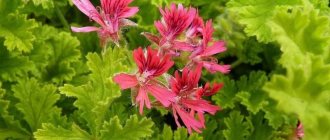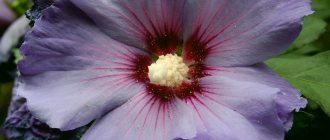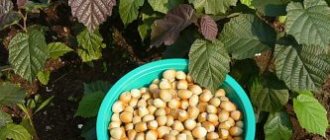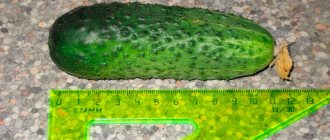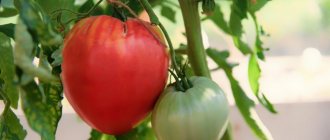Tulip geranium is one of the most extravagant and beautiful flowers of the geranium genus. Its inflorescences resemble lush bouquets of not fully opened tulip buds in miniature. Any housewife would be delighted to see such a flower on her windowsill, but, unfortunately, despite the fact that it was first bred more than 50 years ago, it is rare and little-known in our country.
Description of the plant
This variety of pelargonium appeared relatively recently. She was bred through selective breeding at the Andrea family nursery in Boston in 1966 . It cannot boast of a wide variety of varieties; there are only about 20 of them.
This is due to the shape of the structure of the flower, or more precisely, the bud, because throughout the entire flowering it does not open completely and the stamens remain practically inaccessible for pollination.
Despite the same shape of the bud structure, the shape and color of the petals can differ significantly from variety to variety : they can have either a smooth or wavy edge, the color on the inside is brighter than on the outside.
Inflorescences are formed by 20–40 buds with 7–9 petals. The stems of pelargonium tulip-shaped are straight, vertically oriented, and can reach a height of 80 cm.
The leaves are either glossy or matte-velvety, but are always whole with a wavy or jagged edge of a rich green color.
Where to buy tulip geranium?
After looking at the photo and becoming more familiar with the characteristics of the plant, many gardeners will want to purchase such a geranium for their collections. Where can I find it?
| Where can I buy | region | Price, rub./ |
| Online store Le-mur. | Moscow, rooted cuttings | 450 for any variety |
| Online store, private collection of Zhanna Alekseeva | Moscow, rooted cuttings | 500-900 depending on the variety |
| Online store, private collection of Elena Varsanova | Moscow, rooted cuttings | 500-1000 depending on the variety |
| Shop Liliya96.rf | Ekaterinburg, cuttings, annual plants | 400 cuttings, 600 annual plant |
| Collection of Olga Matvienko | Novosibirsk, rooted cuttings | 600-800 depending on the variety |
Important: You cannot buy tulip geranium in the form of seeds; it loses its decorative properties. You can only buy cuttings; it makes sense to look in private collections, garden centers or online stores that are located near you.
Unfortunately, beautiful and unusual varieties of this pelargonium are not yet very common in our country. But this is easy to fix. You need to look for the variety that attracts you and add a bright and amazing plant to your flower collection - tulip geranium. And then not only new colors will appear in your home, but also a positive aura that always accompanies this culture.
Popular varieties
Varietal differences in tulip geraniums are based on the difference in the structure of the inflorescences.
Happy birthday
A compact plant with a straight stem and conspicuous purple buds forming a dense inflorescence. The leaves are dense, whole, with a small velvety fluff and a beautiful wavy edge.
Mrs Charles
A miniature variety with an interesting bud color - a crimson hue with small light spots on the outside of the petals. It is distinguished by its endurance and can easily endure winter in apartment conditions.
Marie Louise
This variety has beautiful glossy leaf blades of deep green color with light pubescence of yellowish fibers. The flowers are also noteworthy - pale pink with a white edging and wavy edge.
Marbacka tulpan
Marbasca tulip pelargonium is a very beautiful flower of a soft cream color. The buds are strongly curled and have a terry edge. The leaf blades are also slightly curled, have slight pubescence and teeth along the edge.
Victoria Andrea
Unpretentious, but very beautiful compact variety. It features red buds with small white streaks. The stems are straight, low, with dark green shiny leaves.
Carmen Andrea
It stands out with red semi-double buds and dark whole leaves.
Patricia Andrea
Medium-sized variety with dark carved and wavy leaf blades and red-pink corollas. There are faint white veins on the outside of the petals.
Red pandora
It is distinguished by a thick and voluminous inflorescence of red-pink color. The leaf blades are solid, wavy, velvety to the touch.
Pink pandora
This variety has an unusual flower shape - a barrel. The color is light pink with burgundy veins, the inner side of the petals is noticeably darker than the outer.
Conny
This variety has barrel-shaped flowers, like Pink pandora. They are distinguished by a deep pink color, which is darker on the inside of the petal than on the outside.
Linnea Andrea
A compact bush with a beautiful purple inflorescence of 10-15 buds on a dark-colored peduncle. The leaf blades are dense, matte green, with slight pubescence.
Emma Fran Bengtsbo
Pelargonium tulip-shaped Emma is perhaps the most elegant variety. Its inflorescences are painted pastel pink and have an elegant, slightly pointed shape.
The leaf blades are slightly curled and painted in lighter shades of green than other varieties.
Herma
A miniature variety with red-orange inflorescences consisting of almost 40 buds. The leaves are light green, carved.
Features of home care
There are no fundamental differences in caring for tulip-shaped geraniums from other types of geraniums.
Temperature
Pelargonium tulip prefers a warm atmosphere ; the optimal temperature for keeping it in the summer will be 21…26 °C.
It can easily tolerate higher temperatures, but provided that the soil in the pot does not dry out. Attention! In winter, while the plant is dormant, the temperature should be lowered to 15 °C.
The soil
Geranium loves fertile, loose soil that does not interfere with free gas exchange . A suitable substrate can be purchased at a flower shop or made yourself. Mix:
- one part sand;
- two parts of humus;
- two parts of peat;
- two parts of leafy soil.
Fertilizer
the first nitrogen complexes in the second half - end of February, shortly before the appearance of buds. To increase the flowering period, it is better to add potassium-phosphorus mineral complexes.
Immediately after transplanting into a new pot, the plant should not be fed either - fresh substrate contains enough nutrients for the development of geraniums.
Important! During the winter months, when the bush is dormant, it is strictly forbidden to apply fertilizer - this will not allow the geranium to gain enough strength to produce new flower stalks, since it will not rest in the winter.
Dry air
Pelargonium does not respond well to spraying; it is recommended to carry it out only to prevent the appearance of parasites and the development of diseases.
There is also no need to additionally humidify the air around the geranium ; it receives all the moisture it needs from the soil. But watering should be done frequently (every 2-3 days) and the soil should not be allowed to dry out.
View this post on Instagram
Publication from Didenko Svetlana (@didenko720) June 13, 2021 at 9:43 PDT
Lighting
Geranium is photophilous, but does not tolerate constant contact with the sun's rays. For a good growing season , a couple of hours in the open sun is enough for it ; the rest of the time, only diffused bright light should fall on the bush.
What is needed for flowering
For a bush to enjoy long-term flowering, it is important:
- Pick up a pot. It should be a little larger than the root system, but not too spacious, otherwise the pelargonium will devote all its efforts to filling the space of the pot with roots.
- Provide a loose, breathable, nutritious soil mixture.
- Apply fertilizing in a timely manner.
- Trim the bush.
- Give pelargonium time to rest in winter.
Pruning and shaping the bush
Pruning is carried out before the geranium begins to bloom, but no later than March, otherwise the appearance of flower stalks can be greatly delayed.
Formative pruning is usually carried out, its purpose is to form a beautiful shape of the bush. Usually the cut is made at the level of 7–8 leaves with a sterile sharp knife .
Attention! Dwarf varieties can be pinched, since they practically do not grow during the winter.
Transfer
Tulip-shaped geraniums are painful to transplant , so they should not be carried out too often and only when it is really necessary.
For example, the pot can no longer accommodate an overgrown bush, the plant is affected by diseases or has been attacked by pests.
How to water correctly
The ability to accumulate water in the stems is what distinguishes tulip pelargonium. Caring for this plant at home, therefore, requires being careful with watering. Tulip-shaped varieties love water more than other pelargoniums. However, they still cannot be re-uploaded. It is advisable to moisten the soil under them when its top layer (1.5 cm) dries. Watering itself should be carried out not at the root, but through a pan. The latter should be filled with water. Next, place the pot in the tray for about half an hour. Water for irrigation should be taken at room temperature, pre-boiled or left to stand for 24 hours.
In summer, the soil under tulip-shaped pelargoniums is moistened once a day or two, in winter - no more than once a week. A sign of overwatering may be the appearance of water pads on the leaves of plants. With a lack of moisture, the lower leaves turn yellow.
Features of plant flowering
In order for pelargonium to delight you with regular flowering, you need to follow the basic rules of caring for it:
- regularly remove dried inflorescences and leaves;
- carry out formative pruning and pinching of the bush;
- protect geraniums from drafts and sudden temperature fluctuations;
- If flowers of a regular shape appear (with fully opened buds), they should be removed.
Period of activity and rest
The time of active growth for geraniums occurs at the beginning of March and lasts until autumn. When planting buds, you need to apply nitrogen fertilizer complexes . During the flowering period, potassium-phosphorus fertilizers are added.
The dormant period occurs in winter. No fertilizing is applied during this time period, and the temperature in the room where the plant stands is reduced to 15 °C.
Types and shape of flowers
Flowers of tulip-shaped pelargonium are distinguished by a variety of colors , but their shape is not too different.
Usually it is a bud curled inwards with dense petals, which resembles a rosebud or a barrel. Most similarities are with tulip flowers.
Reproduction
Geraniums are propagated vegetatively or by growing from seeds.
Cuttings
Cuttings are one of the easiest ways to get a new plant. Typically, cuttings are harvested after spring formative pruning of the bush.
For cuttings, take stems with 2–3 leaf blades and a pair of internodes in the lower part of the stem.
To speed up root formation, you can use stimulants and plant the cuttings directly in individual pots with soil.
The main sign of successful rooting will be new leaves released.
Attention! You should not use water to root cuttings. Pelargonium will quickly begin to rot, and there will be no talk of any roots.
Dividing the bush
An effective way to quickly get a plant capable of flowering. To do this, during the next transplant, it is enough to divide the root into 2-3 parts and plant them in individual pots.
Growing from seeds
This propagation method is not suitable for growing plants with maternal characteristics . Plants obtained from seeds do not form characteristic inflorescences.
Crown formation
You can make tulip-shaped pelargonium beautiful, lush and compact in two ways: pinching or pruning. In the first case, growth points are simply removed. This provokes the development of young shoots. Pelargonium tulip becomes more branched and lush. Pinching is carried out in February or March over 6-8 leaves.
The pruning technique is used mainly for mature plants. This method allows you to radically change the shape of pelargonium. In this case, old and too large shoots are simply cut out from the bush. In this case, approximately 5 buds are left on each stem. This treatment is done in early spring.
Pinching should be done with clean hands, and pruning should be done with a tool wiped with alcohol. All wounds must be treated with brilliant green or charcoal. You can also use some kind of fungicide. After pruning, the plant needs to be fed.
Possible difficulties during cultivation
If the recommendations for the care and maintenance of tulip-shaped geraniums are not followed, the following difficulties may arise:
- Long formation or complete absence of peduncles . This may be due to the pot chosen for replanting the geranium being too large, or due to depleted soil.
- Yellow spots and dry edges on leaf blades . Most likely, the flower lacks moisture.
- Slow growth and weak color of flowers . Mineral complexes should be added to nourish the flower.
Diseases and pests
Unfortunately, like most plants, tulip geraniums can be attacked by parasites or simply become sick.
- Whitefly. The leaves fall and turn yellow. To get rid of the pest it is necessary to use insecticides.
- Putin tick. The leaves dry out, white dots appear on them, and sometimes the insects themselves can be seen. When treating, the leaves of the plant are treated with alcohol.
- Mealybug. Sugary discharge and a white coating appear on the plant. To get rid of it, simply wipe the plant with soapy water.
- Rust. White round spots appear on the leaves. Unfortunately, for treatment it is necessary to remove the damaged parts of the flower and treat the rest with fungicides.
- Gray rot. A gray coating appears on the leaves. This can only be dealt with by removing the diseased areas.
- Blackleg. The flower stems turn black and the leaves turn yellow and fall off. The flower cannot be saved from this disease.
It is necessary to begin treatment immediately, because the disease spreads throughout a small plant with lightning speed.
